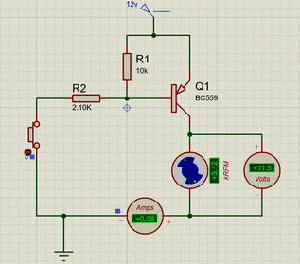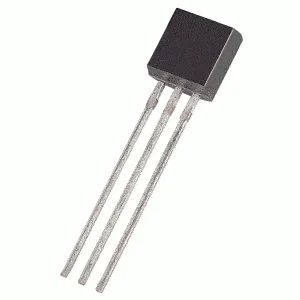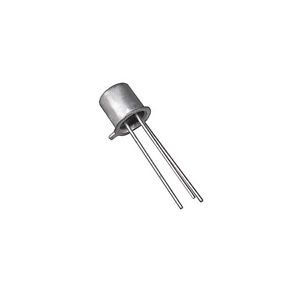The BC559 transistor is a general-purpose PNP transistor. This transistor also comes with many different versions, if you are using this transistor as an amplifier make sure you check the gain of the transistor from the datasheet that can be found below. The Collector−Emitter Voltage(VCEO) of this device is -30V, the Collector−Base Voltage(VCBO) is -30V, and the Emitter−Base Voltage(VEBO) is -5V. Moreover, this device has a continuous collector current of -100Madc and can operate with 150°C. Additionally, the gain-bandwidth product of this transistor is very high so it can be used in many high-frequency applications.
When this transistor is in a biased condition, it can allow a maximum current of -100mA across CE(Collector-Emitter) Junction, this state of the transistor is called the saturation state, and driving a load that consumes more current than -100mA may damage the device in this condition. As you already may know, a transistor is a current-controlled device so when the base current is removed the transistor becomes fully off, in this stage the transistor is working in its Cut-off Region and the Base Emitter voltage could be around -660 mV.

BC559 Pinout Configuration
| Pin Number | Pin Name | Description |
| 1 | Collector | Electrons Emitted from Emitter Collected by the Collector |
| 2 | Base | Controls the biasing of the transistor |
| 3 | Emitter | Electrons emitted from the emitter into the first PN junction |
Basic Overview and Features
- Switching and Amplifier
- High−Voltage: BC556, VCEO = -65V
- Low−Noise: BC556, BC559
- Complement to BC546, BC547, BC548, BC549, and BC559
- These are Pb−Free Devices
- Available in TO-92 Package
Note: Complete technical information can be found in the BC559 Datasheet, linked at the bottom of this page.
Basic Working of a Transistor
The BC559 transistor is a general-purpose PNP transistor. A PNP transistor is made up of a doped N-Type material that is sanduzied in between two P-Type materials. In a PNP transistor hole are the majority charge carrier that means the holes are emitted by the collector which is collected by the emitter, the main difference between the NPN and PNP transistor is that in an NPN transistor the flow of electrons is from collector to emitter, but in a PNP transistor the electrons run from emitter to collector, as a result, a PNP transistor turns on when there is a low or 0V on the base of the transistor. Whereas, an NPN transistor is on when a positive or high signal is applied.
How to use BC559 Transistor
Transistors are current-controlled devices so to turn them on/off a little current is needed. For the BC556 Transistor, this current is less than 2mA, as BC556 is a PNP transistor that means it will be on when the base is connected to the ground, and it will be off when a positive voltage is applied to the base of the transistor.
The simulated circuit below shows how this transistor behaves when the base of the basic circuit is connected to the ground and when it’s connected to 5V of the power supply.

Applications
- Build simple audio circuits
- General-purpose amplifier
- Driver Modules like Relay Driver, LED driver, etc.
- Amplifier modules like Audio amplifiers, signal Amplifiers, etc.
- Darlington pair






Reviews
There are no reviews yet.